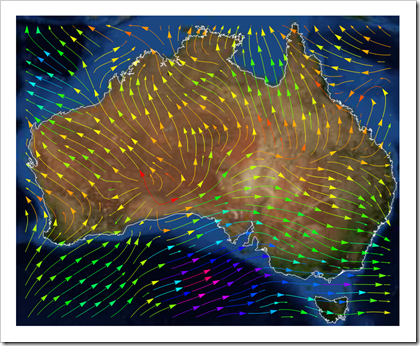Web Map Service (WMS) is is a standard protocol for serving geo-referenced map images over the Internet. JPL OneEarth is used as the data source here.
All the datasets that exist on OneEarth server are documented for WMS clients in an XML Capabilities file, which contains information about the layers, which correspond to datasets, and the styles associated with them.
The base url is http://wms.jpl.nasa.gov/wms.cgi?, to request the image, some parameters are required: layers, srs, width, height, bbox, format, styles. Click the following url, it returns an satellite image from Blue Marble Next Generation, a MODIS-derived 500m true color earth dataset showing seasonal dynamics. styles is used to specify the month. Check OneEarth website for the details.
In Mathematica, image is imported with Import[wms_url]. However, once the image is imported, it loses the geo-reference information, and we need move the image back to its right position (bbox parameter).
The trick is using Raster function to convert image to a graphic object with the right coordinates.
raster = Raster[Reverse[ImageData[img]], {{112, -44}, {154, -10}}];

I borrow the example from this weatherdata blog entry.
The imported image works perfectly with the data from Mathematica.
Mathematica Notebook: wmsimage.nb

2 comments:
This ties in very nicely with the Wolfram post. Thank you.
Dear Sir,
I want to make my own map by tracing the Google sattelite/road Map on the background.
I use JOSM software that has capability to show any WMS service as a background to trace the map.
So can it be possible to do that.
Regards.
Himanshu
Post a Comment